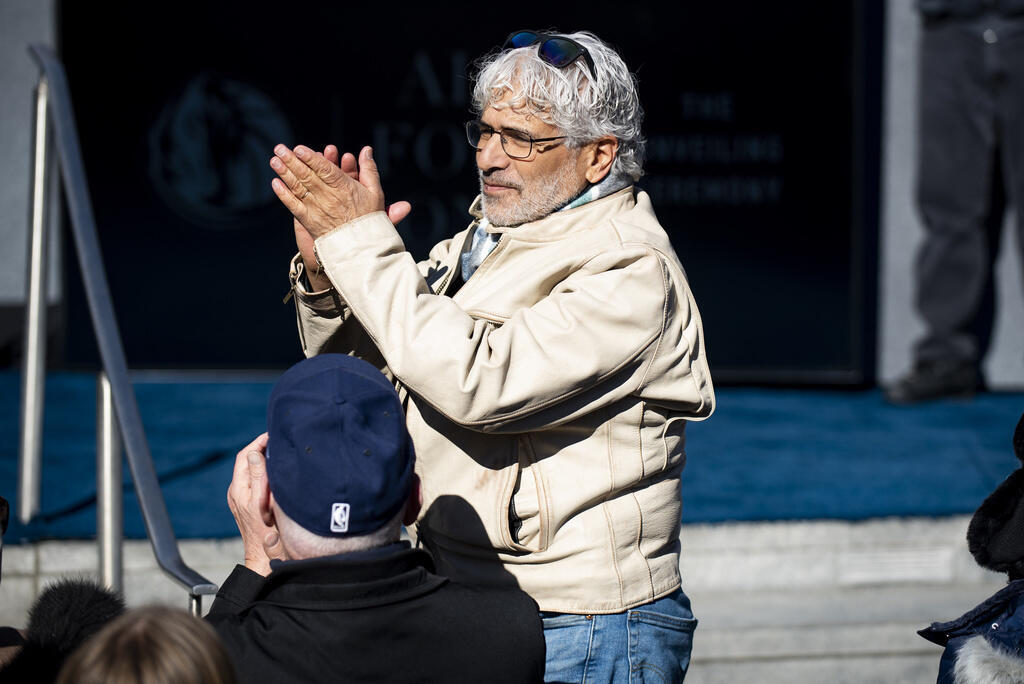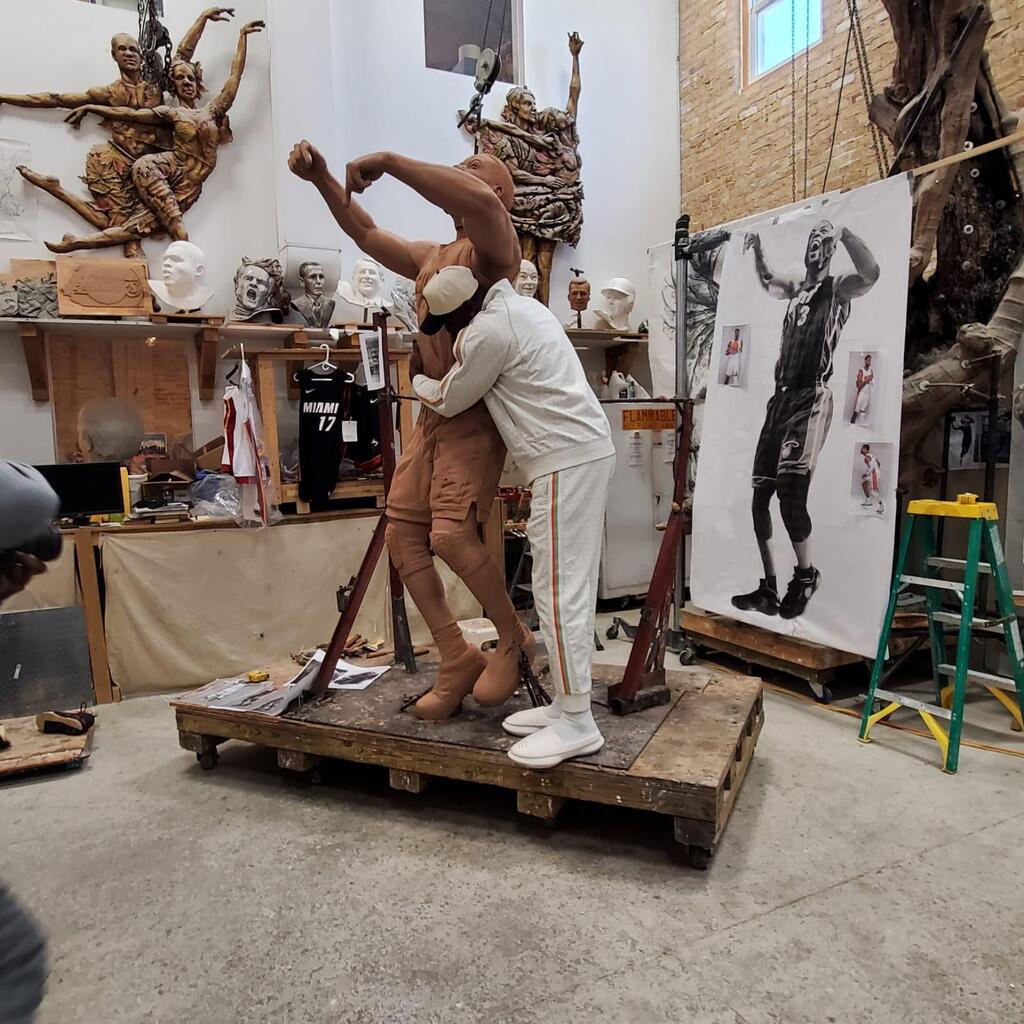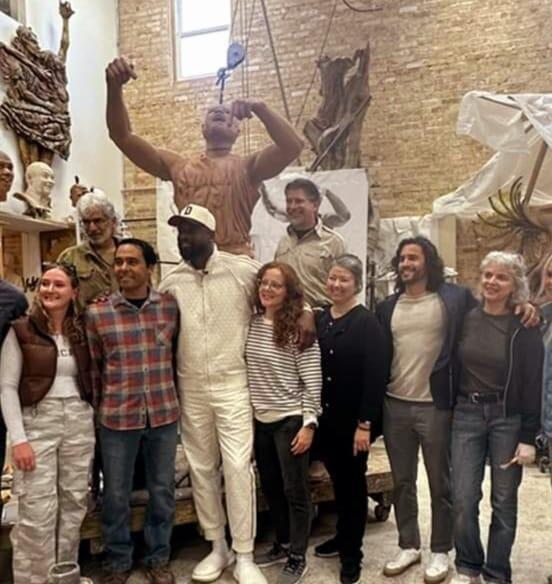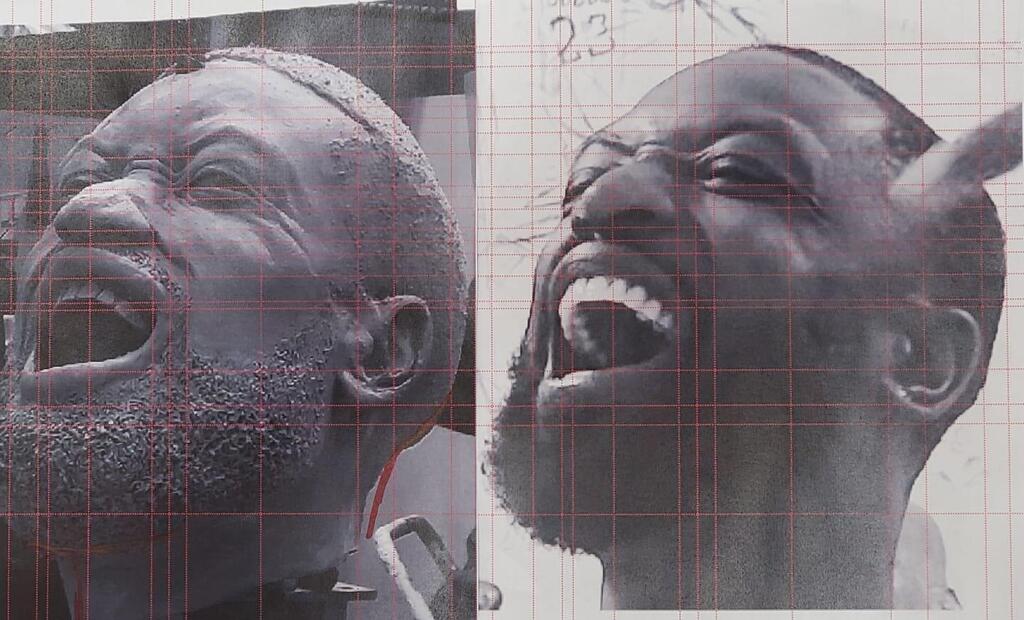Getting your Trinity Audio player ready...
“There will always be a side that’s unsatisfied, and people who complain and try to tarnish the name,” says Israeli sculptor Omri Amrany, who is at the center of the biggest controversy in the first week of the NBA season—and it’s not even about basketball.
On Sunday, Amrany’s statue of former basketball star Dwyane Wade was unveiled outside the Miami Heat’s arena. Wade, inducted into the NBA Hall of Fame last year, spent nearly his entire career in Miami, where he’s revered as a club icon—more than legends like LeBron James or Shaquille O’Neal, who also played for the team—and led the Heat to three championships. Wade is also the first player to be honored with a statue outside Miami’s Kaseya Center.
8 View gallery
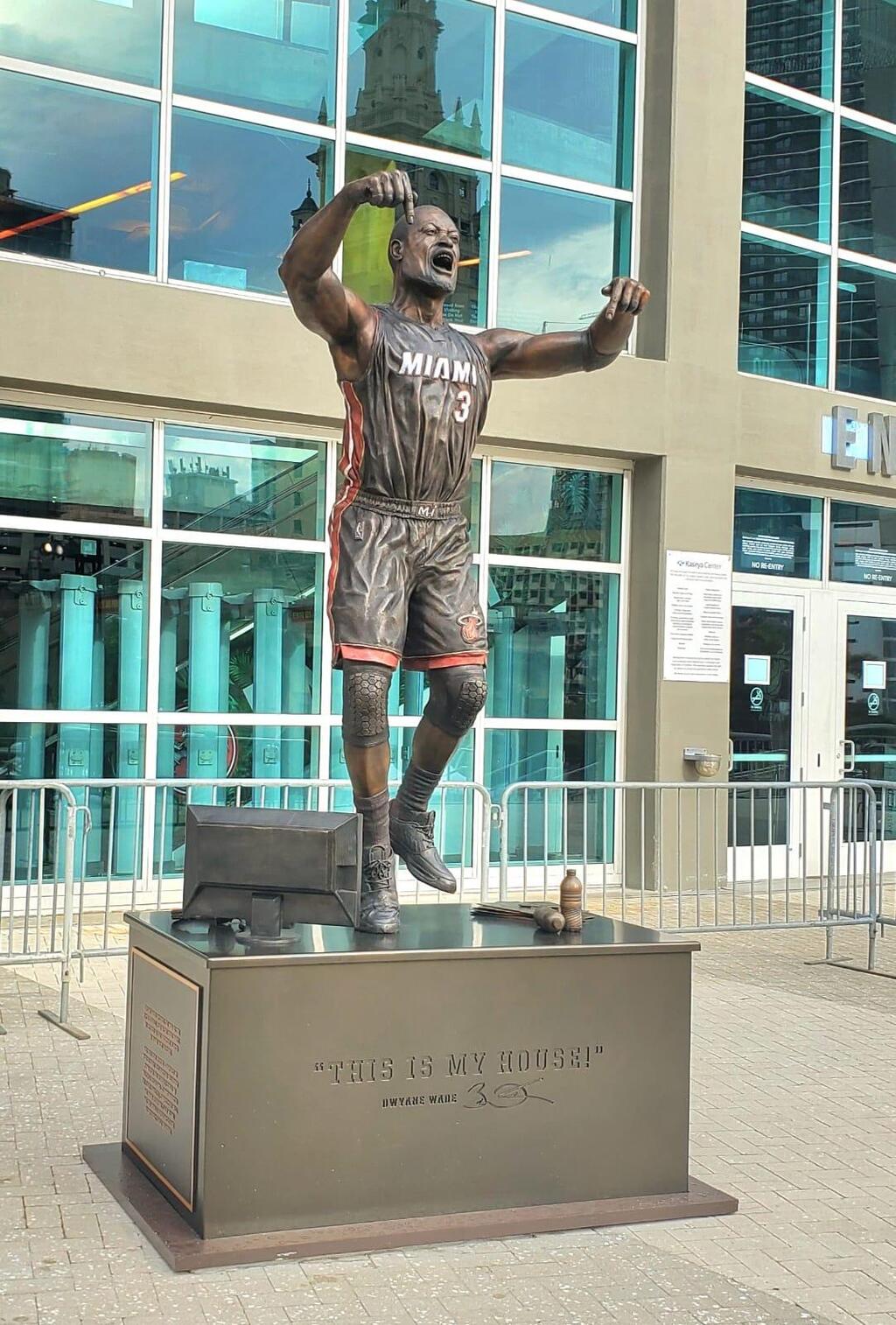

The controversial statue outside Miami Heat’s Kaseya Center
(Photo: Studio Rotblatt Amrany)
However, the unveiling was quickly followed by an online uproar. Fans claimed the statue bore little resemblance to Wade, mocking its likeness. Some online users commented that the statue looked more like actor Laurence Fishburne, while others compared it to the infamous bust of soccer star Cristiano Ronaldo in Madeira. One user even wrote, “Here’s a statue of how you’d look if you were a 75-year-old Chinese man.”
The sculptor behind the 7-foot-tall bronze statue, not including its pedestal, is Israeli artist Omri Amrany. Alongside his wife Julie, he runs the Studio Rotblatt Amrany in Chicago, where he has crafted over 300 sculptures, including those of Michael Jordan, Magic Johnson, Kobe Bryant, Shaquille O’Neal and Jackie Chan. Over the years, Amrany has become the unofficial go-to sculptor for American sports icons, a trusted source for commissions to honor legends in bronze.
In an interview with Ynet, Amrany shared that work on the Wade statue began last December and was based on a photo chosen by the player himself. Amrany says he collaborated closely with Wade on the project, with the former NBA star giving his approval at the early stages of the work.
“The statue’s story is about that moment when Dwyane jumped onto the scorer’s table in a game against Chicago and declared, ‘This is my house,’” says Amrany. “You have to understand, at age 11, Dwyane’s father took him to see the famous Michael Jordan statue outside Chicago’s stadium, which had just been unveiled in 1994. That moment stuck with him, and he set himself a goal to make it to the NBA despite all the hardships, even though he was told he wasn’t good enough. In the end, he led Miami to three championships and put the team on the map. This moment was incredibly significant for him, a cry of triumph from a kid who grew up in Chicago’s South Side and went on to become an NBA champion. That’s why he chose it.”
After selecting the iconic pose, Wade visited Amrany’s studio in Chicago four times, each visit lasting four hours, to personally oversee the statue’s progress. “He worked with us face-to-face,” Amrany explains. “The clay was matched down to the millimeter to his face. It’s sometimes hard for people to recognize a face mid-shout versus a smiling face in a magazine. They’re two completely different expressions.”
Amrany, originally from Kibbutz Ashdot Ya’akov in Israel’s Jordan Valley, who emigrated to the U.S. with his wife in 1989, isn’t fazed by the social media uproar or criticism around the statue he created with studio artist Oscar Leon.
8 View gallery
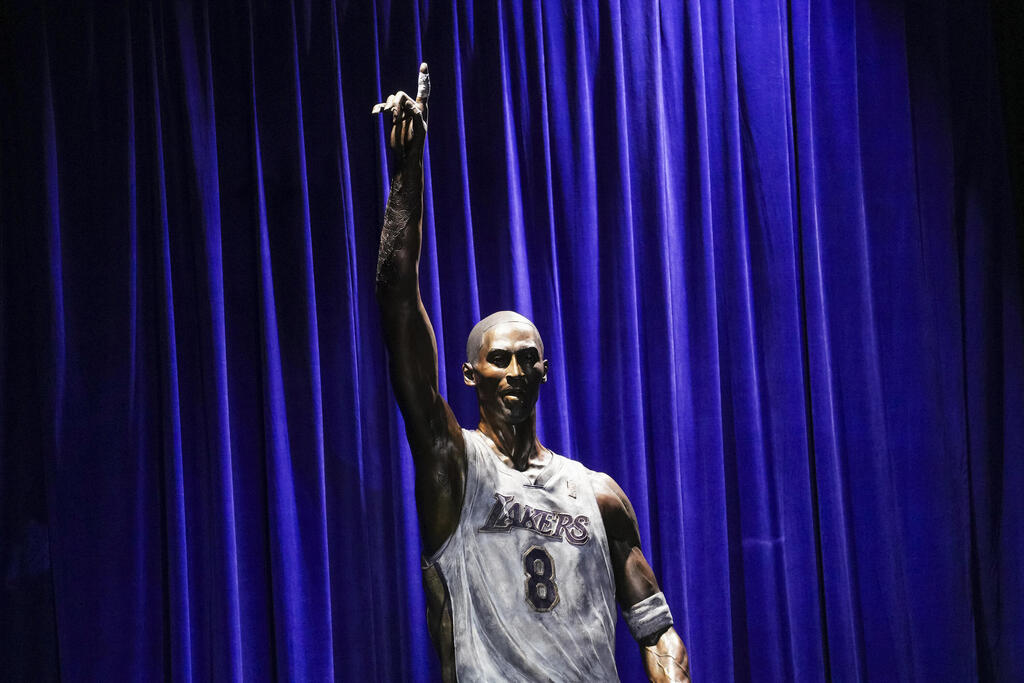

The Kobe Bryant statue unveiled this year at the Los Angeles Lakers arena
(Photo: AP Photo/Eric Thayer)
“People can say what they want—this is American free speech,” he says. “After 300 statues around the world, I listen, but I’m not their psychologist. If the statue hadn’t been spot on, Dwyane wouldn’t have approved it. He visited us four times, and he was involved in the finest details.”
During the unveiling ceremony, Wade himself appeared visibly emotional and said, “This is crazy. I can’t believe it. Who’s that guy?” Amrany clarifies Wade’s words: “Some people didn’t understand his meaning, as if he didn’t recognize himself, but he was really saying, ‘Look how far I’ve come.’
8 View gallery
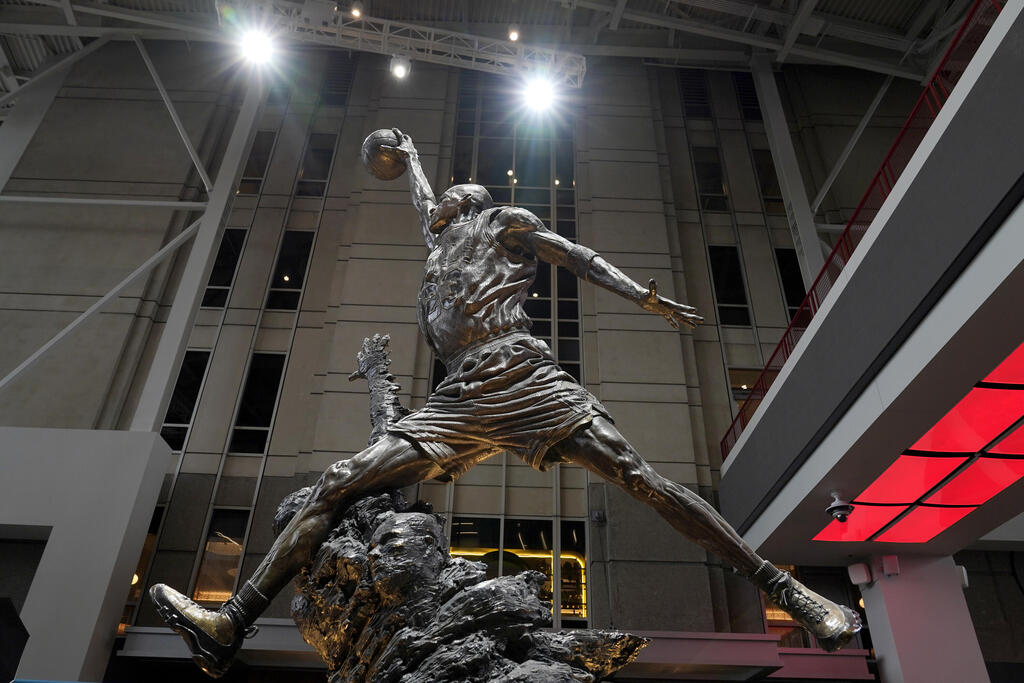

The famous Michael Jordan statue outside the Chicago Bulls arena, also one of Amrany's works
(Photo: AP Photo/Charles Rex Arbogast)
“Wade’s biggest fear was that he’d break down in tears during the ceremony, overwhelmed by emotion. No one truly knows what he went through as a child. He was a poor kid growing up in Chicago, and when the power went out, his family couldn’t even afford candles. Now, after a celebrated basketball career, he’s a successful businessman and a leader.”
Amrany, meanwhile, has his sights set on his next project, with a new statue to be unveiled at the Vatican on November 13.
'It don’t need to look like me. It’s the artistic version'
Wade’s illustrious career spanned 16 years, with 14 of those spent in Miami. He clinched three NBA championships (2006, 2012 and 2013) and was named Finals MVP in 2006. Wade was a 13-time All-Star (winning the game’s MVP title in 2010), the NBA scoring champion in 2009 and an Olympic gold medalist with Team USA in 2008. He holds Miami’s all-time records in points, assists and rebounds.
After his retirement in 2019, his No. 3 jersey was raised to the arena rafters, permanently retired by the franchise.
Following his retirement, Wade found success as a businessman and inspired many with his openness about his family. In an interview with Ellen DeGeneres, he shared how his 12-year-old son, Zion, came to him and his wife, Gabrielle Union, to express a desire to live as a girl.
"Zion, born as a boy, came home and said, 'Hey, so I want to talk to you guys. I think going forward I am ready to live my truth. I want to be referenced as 'she' and 'her.' I would love for you guys to call me Zaya,'" he recalled.
"When our child comes home with a question, when our child comes home with an issue, when our child comes home with anything, it's our job as parents to listen to that, to give them the best information that we can, the best feedback that we can. And that doesn't change because sexuality is now involved in it."
8 View gallery
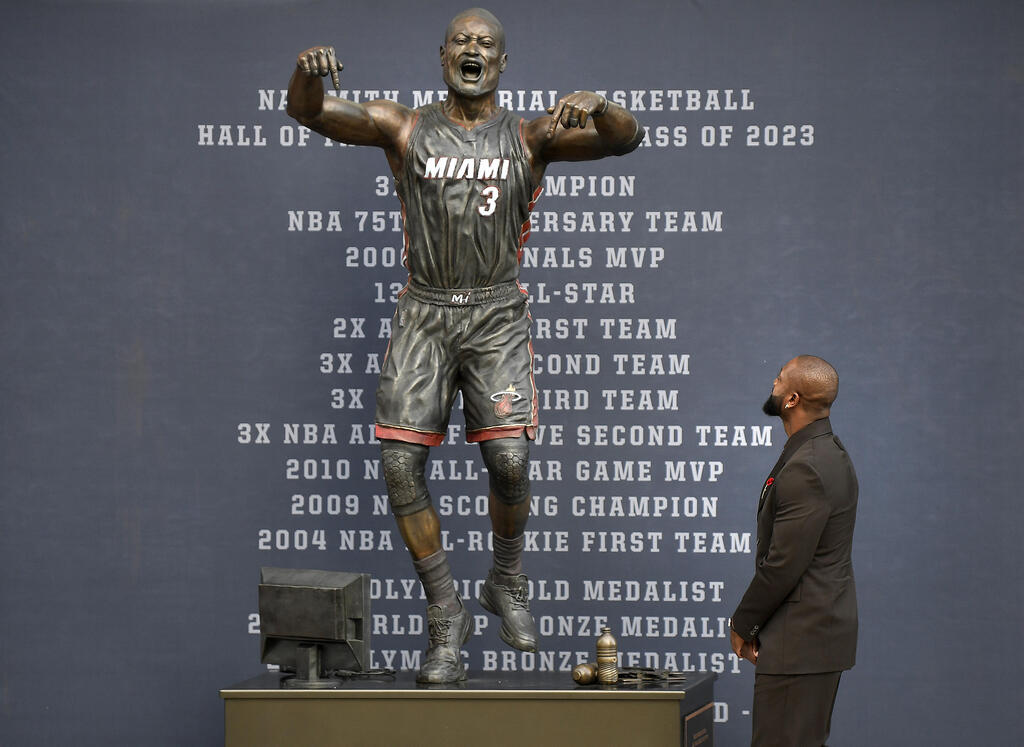

Wade and his statue outside Miami's arena this week
(Photo: AP Photo/Michael Laughlin)
Wade’s support for Zaya earned him a place on TIME magazine’s list of the 100 Most Influential People of 2020. Now 17, Zaya has become a successful transgender model.
As for the statue controversy? Wade awoke the morning after its unveiling to an online backlash but responded with cool detachment. “If I wanted it to look like me, I’d just stand outside the arena and y’all can take photos,” Wade said Monday. “It don’t need to look like me. It’s the artistic version of a moment that happened that we’re trying to cement.”
Get the Ynetnews app on your smartphone:


